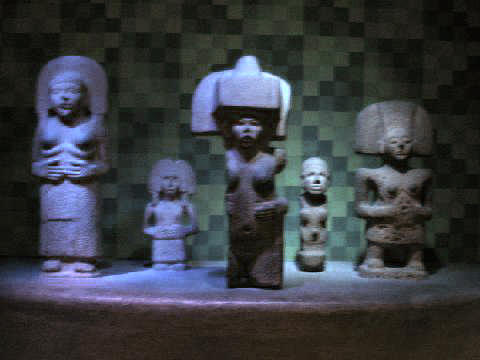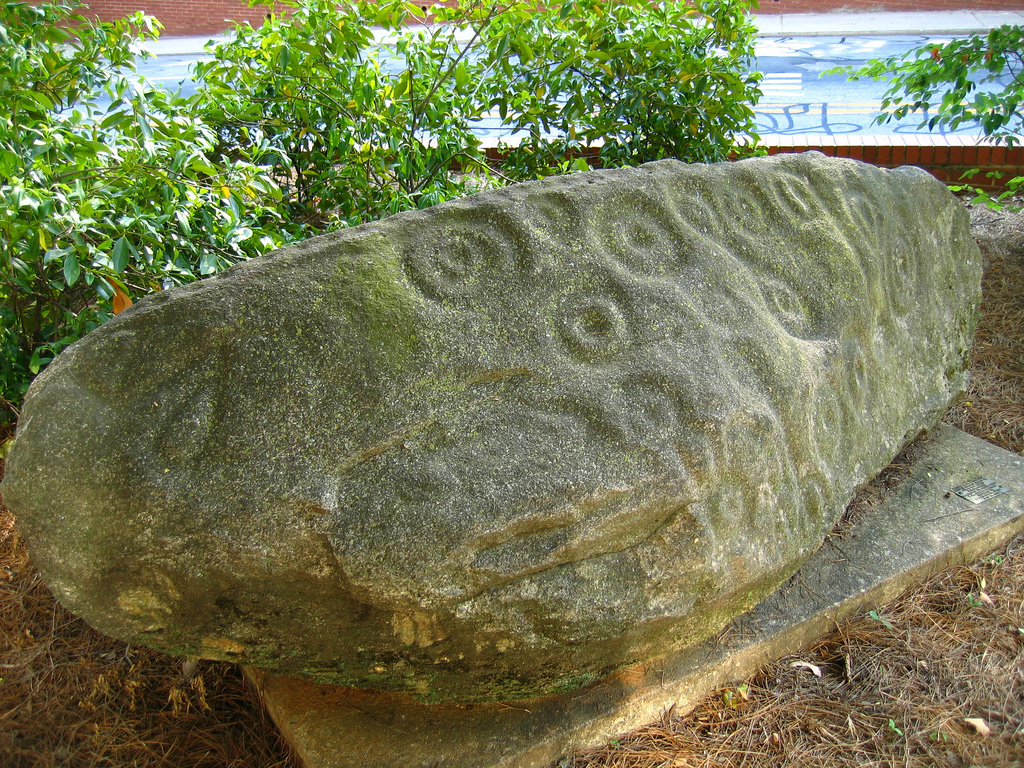Were the Maya Mining Gold in Georgia?
The Spanish noted that while in Chiaha they met a leader from another town called Acoste who stated:
that towards the North there was a province Chisca, and that a forge was there for copper and another metal of that color, though brighter, having a much finer hue, and was to appearance much better, but was not so much used for being softer
Two Spaniards with an Indian guide went in search of this gold yet didn’t find it. Clearly the natives had no interest in leading the Spanish to their gold mines!
Getting the Gold to Market

This brings us back to the French colony of La Caroline near the present-day city of Jacksonville, Florida. The French noted that the Timucua Indians they met living at the mouth of the St. Johns River had several types of gold objects including large gold plates they wore around their necks, gold trinkets they wore around their knees and even gold-tipped arrowheads. When asked where they acquired this gold, as noted earlier, the Timucua stated it came from the Potanou of north Georgia. Yet unlike the other tribes who led the Spanish on a wild goose chase and never actually took them to their gold mines or rich cities, the Timucua were more than willing to take the French to these gold mines in north Georgia. The reason the Timucua were so willing was because they were at war with the Potanou and hoped the French would support them in battle against this hated enemy.
Why would a Timucua tribe living at the mouth of the St. Johns River in Florida be at war with a tribe in the north Georgia mountains? What possible interactions could they have had to lead to a state of warfare?
View larger map |
One possible answer becomes clear once one analyzes the route the Potanou likely used to transport their gold to the Yucatan in Mexico. Gold is quite heavy thus it is unlikely the Potanou used humans loaded down with gold to transport this precious commodity. This would also leave the human caravan open to attack by bandits. The easiest way would be to load up cargo canoes and ship the gold downriver. What river would the Potanou have most likely used for this purpose? A map of Georgia shows that the Savannah River is the most direct route from the north Georgia mountains near Brasstown Bald/Yupaha and the Atlantic Ocean.
Yet once in the Atlantic these large transport canoes would have to go all the way down and around the Florida peninsula to reach the Yucatan. As is common today, merchants are always interested in finding the shortest, easiest route to market. Could there be a shorter route to reach the Gulf of Mexico once the canoes entered the Atlantic at the mouth of the Savannah? The shortest route, in fact, would have been to enter the St. Johns River which is an all water route that flows deep into central Florida and into Lake George near Ocala, Florida. The same Ocala, Florida where a tribe called the Potani lived.
Yet the mouth of the St. Johns River was controlled by the very Timucua who were at war with the Potanou. By the presence of gold among these Timucua and the fact they knew precisely where the gold mines were it is likely they were once allies with the Potanou. Perhaps they received gold as payment for access to the St. Johns River and safe passage through the Timucua’s territory. Perhaps the Potanou no longer wanted to pay or reduced the amount of payments which led to the hostility between these two distant tribes.
Whatever the reason for this hostility, in more peaceful times the Potanou would have reached their brethren, the Potani, at Lake George and perhaps it was here that they “changed drivers,” so-to-speak, and a new group of seafarers took over the job of getting the goods out of Florida and across the Gulf of Mexico to the Yucatan while the previous oarsmen returned to north Georgia. Or perhaps they were located here to make sure the gold had safe passage in its short overland route in this area. From Lake George the traders would continue on to Lake Dexter, Blue Springs and finally to Lake Jesup where this liquid superhighway finally runs out.
At this point the traders would need to unload the goods and travel overland for a few miles until they reached the next series of waterways and canals which took them directly to Lake Okeechobee. (The network of canals in south Florida will be discussed later.) The Poton Maya likely conquered and controlled the Ocala province in order to assure safe passage for their valuable commodity during this overland portion of the trip. Thus it now makes sense why there was a Potanou in the Georgia mountains mining gold and a Potani in the central Florida area living in a province called Ocala located on the inland waterways that served as a short-cut through the state of Florida.
Another piece of evidence occurs along this route which also suggests a Mayan influence. In the Mayan language the suffix -ha means “water.” All along this route are waterways and bodies of water whose names end in -ha such as the Altamaha River just south of the Savannah River, the Ocklawaha River which flows into the St. Johns River, Lake Hatchineha near Orlando, among others.
To be continued. Work in progress. Visit MayaInAmerica.com for more info.




Pingback: Mayan Glyphs on… « Machimon
Pingback: Quest for Fort Caroline